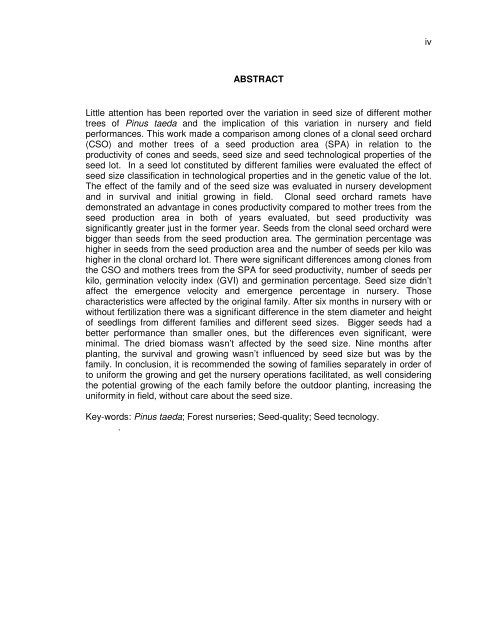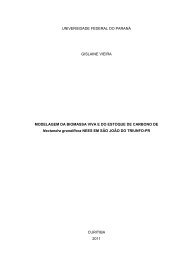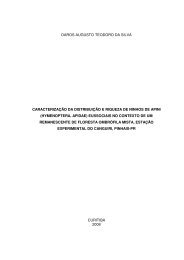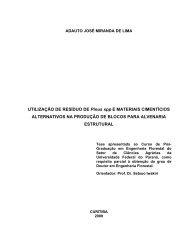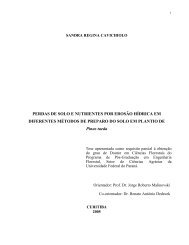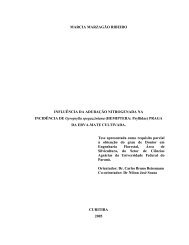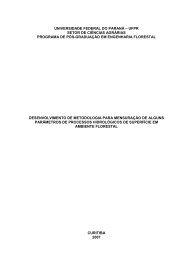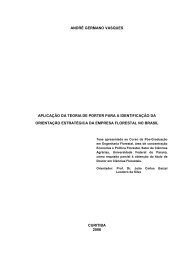KELLY CRISTINA CANCELA INFLUÊNCIA DA FAMÍLIA E DO ...
KELLY CRISTINA CANCELA INFLUÊNCIA DA FAMÍLIA E DO ...
KELLY CRISTINA CANCELA INFLUÊNCIA DA FAMÍLIA E DO ...
Create successful ePaper yourself
Turn your PDF publications into a flip-book with our unique Google optimized e-Paper software.
ABSTRACT<br />
Little attention has been reported over the variation in seed size of different mother<br />
trees of Pinus taeda and the implication of this variation in nursery and field<br />
performances. This work made a comparison among clones of a clonal seed orchard<br />
(CSO) and mother trees of a seed production area (SPA) in relation to the<br />
productivity of cones and seeds, seed size and seed technological properties of the<br />
seed lot. In a seed lot constituted by different families were evaluated the effect of<br />
seed size classification in technological properties and in the genetic value of the lot.<br />
The effect of the family and of the seed size was evaluated in nursery development<br />
and in survival and initial growing in field. Clonal seed orchard ramets have<br />
demonstrated an advantage in cones productivity compared to mother trees from the<br />
seed production area in both of years evaluated, but seed productivity was<br />
significantly greater just in the former year. Seeds from the clonal seed orchard were<br />
bigger than seeds from the seed production area. The germination percentage was<br />
higher in seeds from the seed production area and the number of seeds per kilo was<br />
higher in the clonal orchard lot. There were significant differences among clones from<br />
the CSO and mothers trees from the SPA for seed productivity, number of seeds per<br />
kilo, germination velocity index (GVI) and germination percentage. Seed size didn’t<br />
affect the emergence velocity and emergence percentage in nursery. Those<br />
characteristics were affected by the original family. After six months in nursery with or<br />
without fertilization there was a significant difference in the stem diameter and height<br />
of seedlings from different families and different seed sizes. Bigger seeds had a<br />
better performance than smaller ones, but the differences even significant, were<br />
minimal. The dried biomass wasn’t affected by the seed size. Nine months after<br />
planting, the survival and growing wasn’t influenced by seed size but was by the<br />
family. In conclusion, it is recommended the sowing of families separately in order of<br />
to uniform the growing and get the nursery operations facilitated, as well considering<br />
the potential growing of the each family before the outdoor planting, increasing the<br />
uniformity in field, without care about the seed size.<br />
Key-words: Pinus taeda; Forest nurseries; Seed-quality; Seed tecnology.<br />
.<br />
iv


